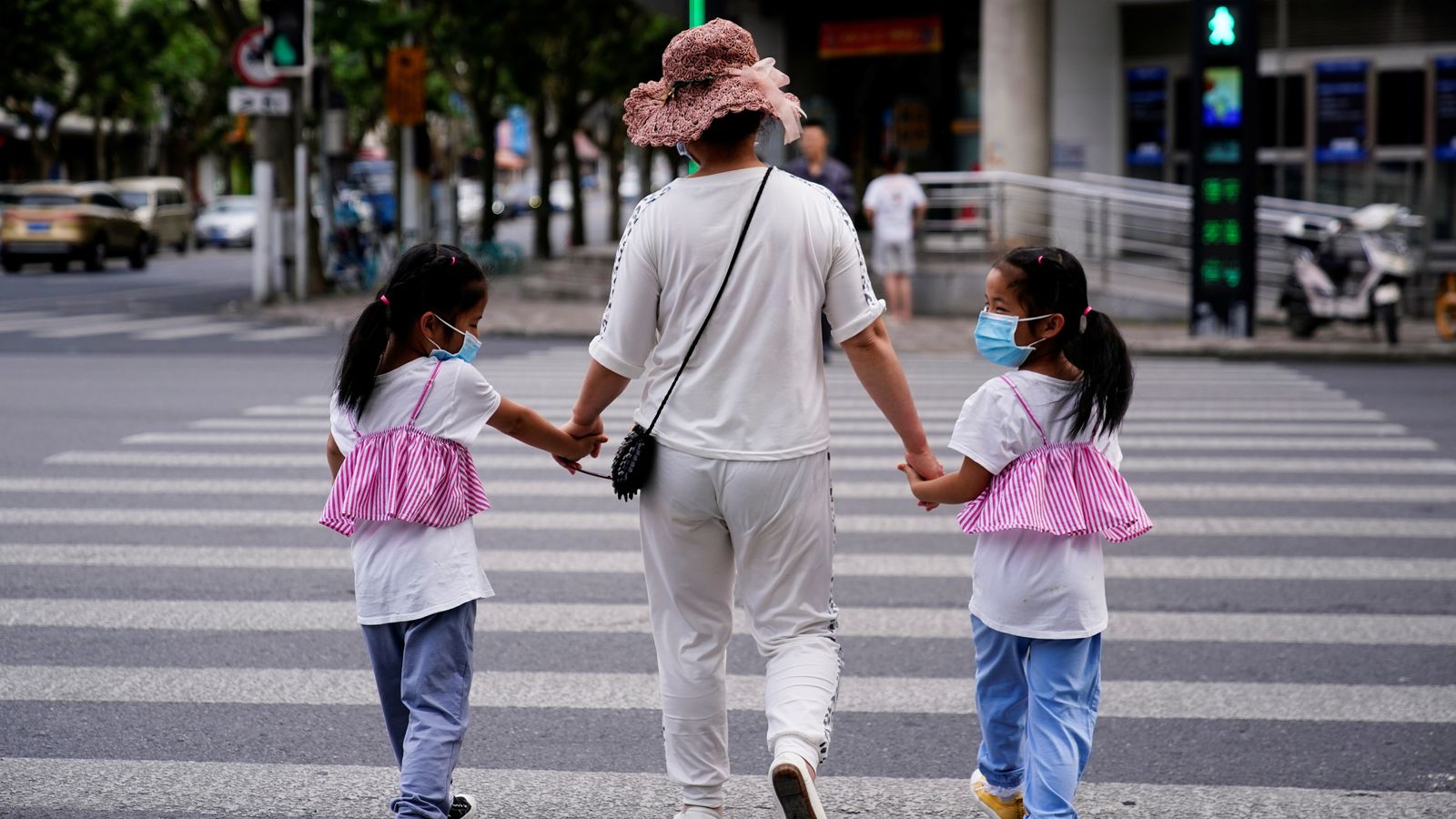China has recorded its first population decline in six decades, as its birth rate plunged according to figures.
The world’s most populous country had 850,000 fewer people at the end of 2022 compared with the previous year, China’s National Bureau of Statistics announced on Tuesday.
The total population was 1.41 billion people, the bureau said at a briefing, adding that there were 9.56 million births and 10.41 million deaths.
The tally only includes the population of mainland China, excluding Hong Kong and Macao as well as foreign residents.
The drop, the first since 1961 in the last year of China’s Great Famine, is expected to have profound implications for the country’s economy and the world.
China’s birth rate last year was 6.77 births per 1,000 people, down from a rate of 7.52 births in 2021 – marking the lowest birth rate on record.
Much of the demographic decline has largely been linked to China’s one-child policy, which lasted 35 years, and the high costs of raising children.
It also supports estimates that India could take over as the world’s most populous country.
Outlook ‘bleaker than expected’
Demographer Yi Fuxian said the country’s shrinking labour force and downturn in manufacturing heft would further exacerbate high prices and high inflation in the United States and Europe.
“China’s demographic and economic outlook is much bleaker than expected. China will have to adjust its social, economic, defence and foreign policies,” he added.
But the head of China’s National Bureau of Statistics, Kang Yi, said the country’s overall labour supply still exceeds demand.
China is expected to soon be overtaken by India as the world’s most populous country, if it has not already.
Estimates put India’s population at more than 1.4 billion – which was the total population of Africa in 2022, according to Statista.
The United Nations estimated last year that India will replace China as the world’s most populous nation in 2023.
The United States has a population of more than 333 million according to estimates by the US Census Bureau, while the UK population was estimated at 67.1 million in 2020, according to the Office for National Statistics.
Read more:
China ‘a significant threat to the UK on many different levels’ and dependency should be curbed, MPs warn
World population reaches eight billion – as projections reveal where is growing the fastest
Impact of one-child policy
The Chinese government implemented the one-child policy from 1980 until 2015 following concerns about rapid population growth.
It limited families to one child and was strictly enforced – women were often forced to have abortions, many of which were gender selective due to a historical and cultural preference for families to have boys.
But since 2021, local governments have provided incentives to encourage more births including tax deductions and longer maternity leave.
The last time China is believed to have recorded a population decline was at the end of the 1950s, under Mao Zedong’s drive for collective farming and industrialisation that produced a massive famine killing tens of millions of people.









